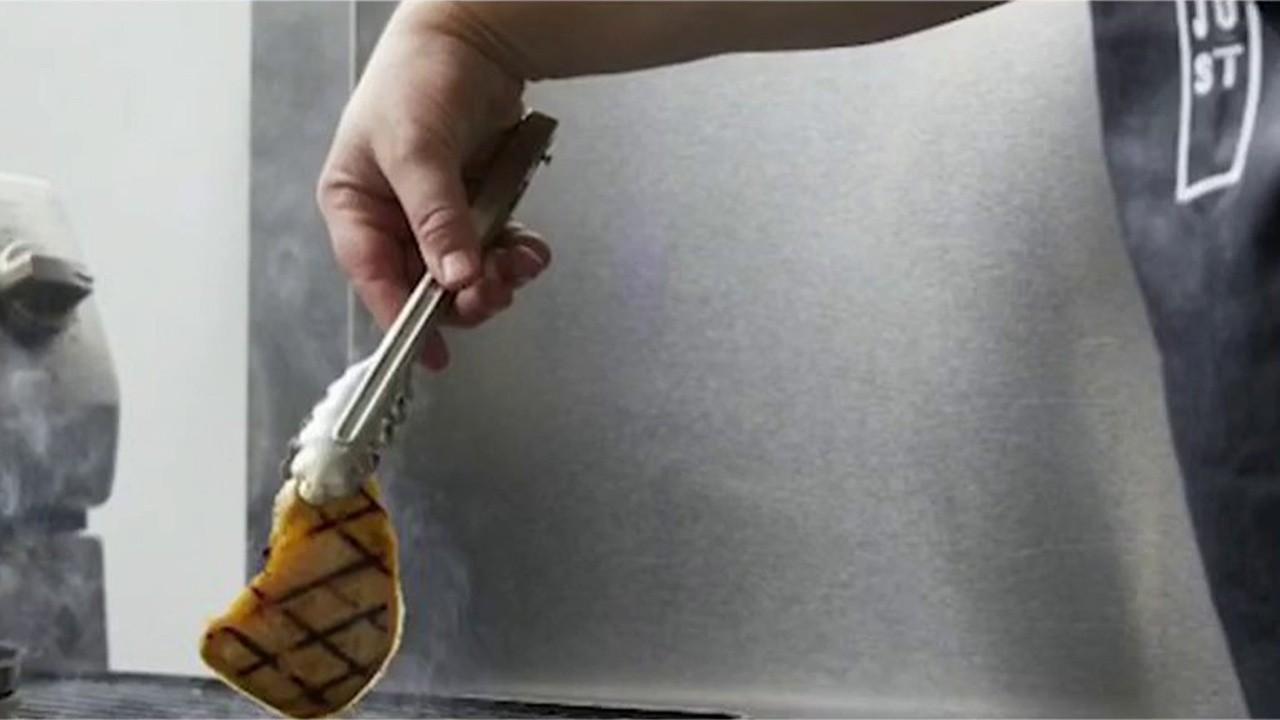Push to prevent next meat shortage hits big obstacle
The meat industry has been consolidating for decades, and 80% or more of meat is slaughtered by just a few companies
Sudden meat shortages last year because of the coronavirus led to millions of dollars in federal grants to help small meat processors expand so the nation could lessen its reliance on giant meatpacking slaughterhouses to supply grocery stores and restaurants.
Like shortages of protective clothing for health care workers, hospital equipment and even toilet paper, the reality of empty meat counters was a shock to many Americans unaccustomed to scarcities. But where most other supply gaps are being addressed by changing how the U.S. acquires key items, the money flowing to small slaughterhouses shows no sign of solving the meat problem.
The meat industry has been consolidating for decades, and 80% or more of meat is slaughtered by just a few companies, whose operations were crippled last year when the virus began spreading among workers.
“Even a significant increase in processing capacity in those small and mid-size processors, that’s a small amount in the grand scheme of things,” Iowa Agriculture Secretary Mike Naig said. “Yes, it provided some relief but no, it’s not at the level that will rival the big processors.”
Or as Terry Houser, a meat processing expert at Iowa State University, put it, “Small plants cannot replace the big plants when they go down.”
GET FOX BUSINESS ON THE GO BY CLICKING HERE
The problem illustrates the difficulty of creating more sources of supply in an industry that is trending in the opposite direction.
There’s little doubt the grants will help small processors and in turn provide sorely needed rural jobs, but the economics of meat now centers on large, highly efficient slaughterhouses, not smaller plants whose numbers have been decreasing sharply.
The number of smaller operations that meet local demand plunged by 42% to 1,910 between 1990 and 2016, according to the U.S. Department of Agriculture.
When the coronavirus sickened thousands of workers at the big slaughterhouses, forcing some to close temporarily, output dropped to 60% of normal. Many producers suddenly had nowhere to take their animals for slaughter, and the small processors who remained, who mostly provide meat for local groceries and farmers markets, couldn’t take up the slack.
Later, Iowa was among at least 16 states that used some of the billions of dollars in federal COVID-relief aid to provide grants to small meat processors, enabling them to replace equipment and expand. In Iowa, the state awarded $4 million to help 109 small meat and poultry plants increase production, with some of the funding also going toward marketing and education.
BIDEN SHUTTING DAKOTA ACCESS PIPELINE WOULD CAUSE FOOD PRICES TO SPIKE
Likewise, Arkansas awarded $5 million in federally funded grants, Indiana divvied up $4 million and Montana used $2 million to fund grants of up to $150,000.
Most of the money went to small town businesses, which have withered as larger plants opened that could daily process thousands of cattle and up to 20,000 hogs. Small processors typically slaughter only 10 or 20 animals a week.
When the larger plants began closing last spring, some hog farmers ended up killing and burying thousands of animals.
Jeff Hodges, who owns a small processor in the tiny northwest Iowa city of Minden, said he was overwhelmed with business last spring and is still scheduling a year into the future as demand for locally raised meat remains strong.
“At first it was a giant nightmare,” Hodges said. “Now you’re used to the norm of your being maxed out and you pray everybody shows up for work.”
Hodges has received a $33,000 grant to buy a splitting saw, grinder and other equipment, but he’d need to spend closer to $750,000 to substantially increase production. That’s a big investment for a business he bought in the mid-1990s for $90,000.
GRAPE NUTS ARE RETURNING SOONER THAN EXPECTED, HERE’S WHEN
The key to lessening dependence on the big processors is to make larger grants and loans available to mid-sized processors, said Rebecca Thistlethwaite, a rancher and director of the Oregon-based Niche Meat Processor Assistance Network. That’s an expensive proposition, with such plants costing $20 million or so.
Even if the government offers more money, expansion in an industry with low profit margins could be slow, she said.
“A lot of people think that by changing policy, all of a sudden a bunch of new entrepreneurs are going to come into the space, and that’s not going to happen,” she said. “You don’t have a bunch of people sitting on a bunch of money who are saying, ‘Oh, I just can’t wait to start a meat processing plant.”’
Some farmers, like the owners of Vaughn Farms near the small central Iowa community of Maxwell, say their chance of building their specialty cattle operation could depend on small processors expanding.
With processors already booking out into next year, farmers must schedule space for cattle that aren’t born yet.
“That’s hard because animals grow at different rates, just like people,” Jalane Vaughn said. “To try to gauge when something is going to be 1,200 pounds or the optimal weight for harvest has been a struggle.”
CLICK HERE TO READ MORE ON FOX BUSINESS
Co-owner Jerilyn Hergenreder said she hopes the government’s sudden interest in building up small processors makes a difference.
“I’m happy for the small processors that they have become relevant again and they’re definitely trying to handle the demand,” Hergenreder said.


